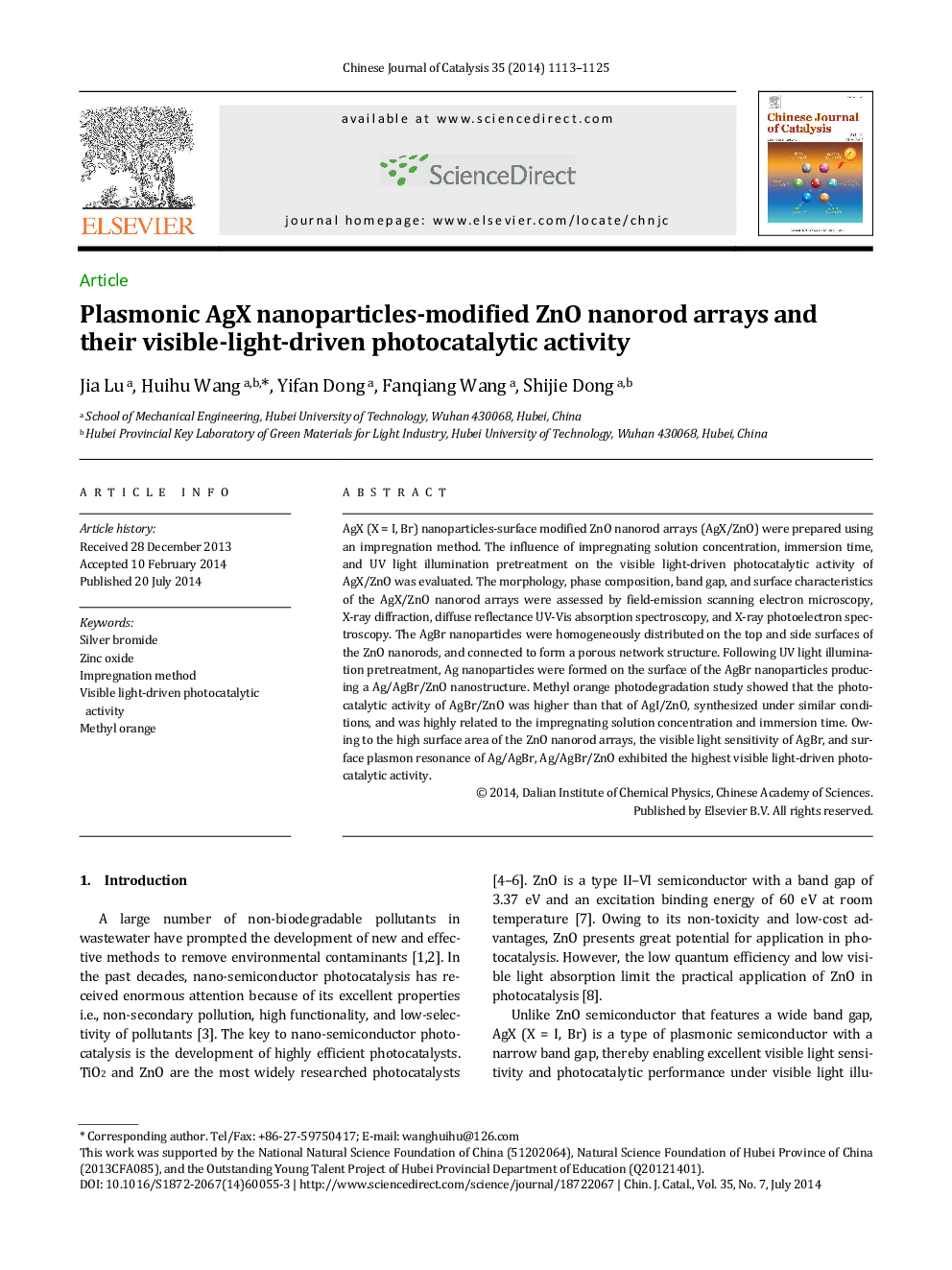| Article ID | Journal | Published Year | Pages | File Type |
|---|---|---|---|---|
| 59633 | Chinese Journal of Catalysis | 2014 | 13 Pages |
AgX (X = I, Br) nanoparticles-surface modified ZnO nanorod arrays (AgX/ZnO) were prepared using an impregnation method. The influence of impregnating solution concentration, immersion time, and UV light illumination pretreatment on the visible light-driven photocatalytic activity of AgX/ZnO was evaluated. The morphology, phase composition, band gap, and surface characteristics of the AgX/ZnO nanorod arrays were assessed by field-emission scanning electron microscopy, X-ray diffraction, diffuse reflectance UV-Vis absorption spectroscopy, and X-ray photoelectron spectroscopy. The AgBr nanoparticles were homogeneously distributed on the top and side surfaces of the ZnO nanorods, and connected to form a porous network structure. Following UV light illumination pretreatment, Ag nanoparticles were formed on the surface of the AgBr nanoparticles producing a Ag/AgBr/ZnO nanostructure. Methyl orange photodegradation study showed that the photocatalytic activity of AgBr/ZnO was higher than that of AgI/ZnO, synthesized under similar conditions, and was highly related to the impregnating solution concentration and immersion time. Owing to the high surface area of the ZnO nanorod arrays, the visible light sensitivity of AgBr, and surface plasmon resonance of Ag/AgBr, Ag/AgBr/ZnO exhibited the highest visible light-driven photocatalytic activity.
Graphical AbstractAgX (X = I, Br) nanoparticles-modified ZnO nanorod arrays were synthesized using an impregnation method. Ag/AgBr/ZnO exhibited the highest visible light-driven photocatalytic activity because of the high surface area of the ZnO nanorod arrays, the visible light sensitivity of AgBr, and the surface plasmon resonance of Ag/AgBr.Figure optionsDownload full-size imageDownload as PowerPoint slide
